Overview
Birds, through centuries, have inspired and challenged humans. Since Leonardo Da Vinci many great-minds have attempted to mimic Mother Nature in order to create a flying machine, until Otto Lilienthal’s first glider flight and the Wright Brothers first powered flight in their Flyer. Since then aeroplanes have evolved in varieties – from small aircraft’s to large cargo carriers, from domestic passenger airliners to fighter jets. Each of these flying machines evolved with some practical purpose – if the Gee Bee R – 2 Racer was designed for pleasure seekers, the B-52 Stealth Bomber was designed for critical missions such as bombarding and data acquisitions. Whatever may be the design they all had one thing in common – they all needed a pilot to fly them. Information plays a vital role with respect to monitoring activities across the border; forest fires etc. Birds eye view of these territories would be the most effective form of information, but in such missions the pilot’s valuable life is put to risk. A remotely controlled aircraft, which can perform all the duties relentless of bad weather or hazardous conditions, may be the answer. But in the realm of reality, to produce an aircraft which is controlled remotely is a challenge in itself. This challenge has created a new wave of technology called the Unmanned Air Vehicle. This technology has been effectively put to use by countries like Israel in Bekaa Valley, US in Iraq, Bosnia and Afghanistan and Russia in Chechnya. In view with the demand in aerial surveillance in war and as well as in peacetime, it has proven to be too costly to risk pilots and aircraft’s. For this reason governments across the globe have begun investing in the new technology referred to as ‘The Unmanned Air Vehicle’. These vehicles would posses’ capabilities to access hazardous and inaccessible territories providing information in real time and also act as a strike force without risking valuable life and expensive machineries. Capabilities are not just limited to military applications alone but also to aid in peace time applications and disaster management by being able to provide valuable information from high-risk places such as volcanoes, earthquake hit areas and so on.

The autonomous group has been pioneering novel concepts in the unmanned air vehicle space and currently has been working on the development of Micro Autonomous Systems across Air, Water, Land and has a venture Drone Aerospace Systems to address the same. Typical areas being considered are:
- Micro Air Vehicles, Micro Amphibian, Robotic Fish
- Auto Pilot Systems
- Ground Control Station Software
- Communication Devices
- Tracking Antenna
Drone Aerospace & DC Enterprises was chosen as one of the teams to represent India at the US Army-Asian Technology Demonstration for Micro Air Vehicles organized jointly by the US Department of Defense and the GOI during March 2008 and finished in the top five besides winning the NPMICAV 2014 in mission mode.

MAV 2008
2014 witnessed Drone Aero, DC Enterprises, NDRF-IEI, winning the first and third place in NPMICAV 2014 organized by DRDO and CSIR that featured the top 12 teams in the country in mission mode.
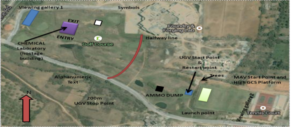
MICAV Mission 2014
Rapid Prototyper
Soldering Station
Drill Press
CRO
Embedded Development Boards
- Development of Tracking Antenna – SSPS
- Development of radio communication module – General Aviation
- Battery Management System and ESC – Drone Aerospace
- 1: Autopilot System

- Battery Backed GPS at 10Hz Update
- On Board GPS Antenna
- Optional External GPS Antenna Interface
- On Board switching regulator 5V-30V
- Independent Servo and Board Power Supply
- 10 (+9) Output Channels
- Micro SD Card Slot for Data Logging
- 4 Analog Inputs ( 0-3.3V, 12Bit)
- UART Interface for Telemetry
- USB and CAN Interface
- Optional PPM Input for RC Link
- Redundant Sensor Suite
- Weight – 9g including onboard GPS Antenna
2: Ground Control Station Software – Scryer
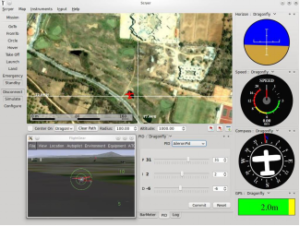

- Fully Integrated with Drone Autopilot and Meerkat
- Multi-Target Multi Mission Simultaneous Operations
- Software in Loop Simulation
- Plug-in Based Modular Architecture developed in C++
- SDK for Additional Plug-in
3: Autonomous Quadcoptor – 360 mm
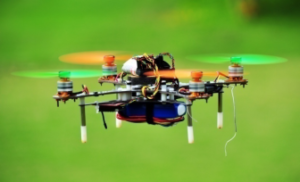
- 360 mm Overall size
- Fully Integrated with Drone Autopilot System
- Full Duplex RF Telemetry
- Auto Take-Off and Landing Capability
- 20 minutes of Mission Time
- 5.8 GHz Video Downlink
- Altitude Hold and Position Hold Capability for Hovering and Perching Operations
4: Micro Air Vehicle
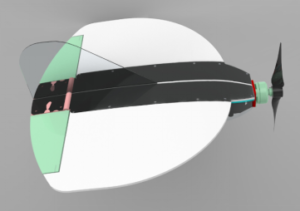
- First Truly Mass Produced Micro Air Vehicle System
- Low Cost and Modular Snap-IN Design Airframe
- 20 Min Flight Endurance
- 8 GHz Video Downlink
- Servo Stabilized 640 x 480 Video
- Full Duplex RF Telemetry
- Can be Configured as Fly and Forget System
- Full Autonomous System
5: Tracking Antenna

- Active Antenna Tracking system
- Directional and Omni Directional Antenna Mountings
- USB Interface and Bluetooth Interface for Remote GCS
- Up-to 12 hours On-field Operations
- Onboard GPS and Magnetometer for Geo Caching
6: Autonomous Micro Amphibian

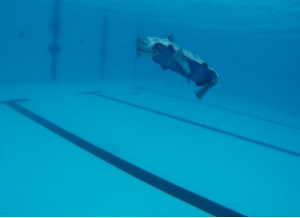
- Marine Grade Aluminum System
- Water Proofing up-to 10 m Depth
- Tether less underwater operations
- Customizable Payload Options
- Customizable Navigation and Mission Routines
- Multi Terrain System Autonomous Navigation Capability
- 30 min Endurance on Surface
- 60 Min Swimming Endurance
- Up to 0.5 m/s of swimming and 1 m/s ground velocit
7: Micro Robotic Fish


- 400 mm Length
- 600 g Weight in Air
- Carangiform Locomotion
- Up-to 1 m/s Forward Dash Speed
- Active Directional Control
8: Radio Modem
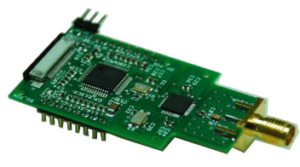
- Operation at 867 MHz
- Outdoor Line of Sight (LoS) Up-to 2 km
- 10 dBm Transmit power
- -93dBm Sensitivity at 1Mbps
- RF Data Rate : 1 Mbps
- 128 bit – AES Encryption/ Decryption

Krishna Venkatesh
Krishna Venkatesh, a GATE scholar, mechanical engineer by profession and an alumni of the Indian Institute of Science, Bangalore, holds a Ph.D. in Nanoengineering. He has over 25 years of industrial, research, academic, consultancy and administrative experience. He is currently the Founder-Director of CIIRC, the centralized research centre of Jyothy Institute of Technology, duly supported by Sri Sharada Peetham, Sringeri. CIIRC is also a SIRO Centre recognized by DSIR. As Founding Director, he has established research cum incubation labs in 18 different domains of science & technology alongside an Atal Incubation Centre (AIC JIT Foundation) from NITI Aayog, GoI. He is also a member of the Vision Group on Nanotechnology, GoK, and Steering Committee Member, TUV Rheinland, Germany. He has also been the Executive Council Member of Visvesvaraya Technological University and Member, Karnataka Knowledge Commission (Unmanned Systems Technology).
During his two decade career, he has worked with NAL, BEML, IISc, DRDO, Visvesvaraya Technological University and Jain University in different capacities. Previously, at Jain University, he was responsible in shaping numerous initiatives and held concurrent roles as the Dean and Director of the Research and Engineering wing having been its Founder- Director. He was also responsible for the Technology Business Incubator (TBI) funded by DST and Alstom from France, being its CEO. He was also instrumental in setting up a FIST centre from DST for an Advanced Instrument Facility. Additionally, he also established the TUV Rheinland Energy programme and a programme on Food Technology funded by MOFPI.
He has completed numerous research projects and has been instrumental in CIIRC getting more than 50 projects worth Crores of Rupees, funded by DRDO, DOS, DST, DBT, DAE, DIC, MOES, NCAOR, VGST, AYUSH, NITI Aayog and several private bodies. Dr. Venkatesh has numerous research publications (80), citations (1300), products (5), monographs, book chapters and patents filed and granted to his credit. has been conferred with awards from Diamant of Germany, KSCST, Honeywell, Indian Institution of Engineers, and others. Additionally, he is the Director of Drone Aerospace, a company that is into the development of Micro Air Vehicles(MAVs). Drone Aero space represented India at The US Army Technology demonstration for Micro Air Vehicles and Unmanned ground vehicles and finished in the top 10 from among competitors competing worldwide in 2008; Drone Aero space also won the 2014 edition of National Programme on Micro Air Vehicles (NP-MICAV) event in mission mode sponsored by DRDO and CSIR.
His research interests include Tribology, Autonomous Systems and initiating start-ups. He is also a Fellow of various professional bodies such as IEI, TSI, ISAMPE, IIPE and others, besides having been a delegate to various countries as part of FICCI, GoK, etc. An avid sports person, he represented the State and University in his younger years as a swimmer and is the recipient of many awards. Besides, he is into white water rafting and spice farming. he has also officiated as the Technical Advisor to the teams that won the
- 2009, 2010, 2011, 2012 and 2013 SAE Aero Design USA Micro Air Vehicle Competition, ISRO Small Satellite Design, Indian National Academy of Engineering award for design of secondary payload for a microsatellite, Innovate India Award instituted by National Research Development Corporation, Govt. of India.
- Numerous other aero events organized by IIT’s, Boeing and others.

Krishna Kishore
Krishna Kishore is basically a Mechanical Engineer by profession with a Masters in Energy Engineering. He has over 14 years of experience in UAV systems. Having worked with Honeywell for a couple of years he has honed his skills in autonomous system development and is currently the programme head of Micro Air Vehicle development. He has been the team leader for numerous events in mission mode and recently bagged the first place at NPMICAV 2014 hosted by DRDO and CSIR under the team name “Silver Arrow”. He has been one of the co founders of Drone Aero a company focusing on development of drone technology.
He has been responsible for the radio modem, auto pilot development and GCS. His other interests include developing marine and terrestrial based autonomous systems. He is also an avid aero-modeller. He and his team have won several awards including the Honeywell Team excellence award and Best MICAV design by DRDO and CSIR. He specializes in both fixed and rotary platforms and is a good guitar player besides being a Wildlife enthusiast. At Honeywell he initially worked on the development of UAV’s and later joined the system engineering group where he was involved in product development from conceptualization to production. He has a wide experience in the domains of aerospace, industrial automation, home and building solutions and autonomous systems and is the Principal Research Engineer.
Email Id: krishna.k@ciirc.jyothyit.ac.in

Lohit Shivanna
Lohit Shivanna is basically an Electronics Engineer by profession with a Masters in RF communication. He has over 8+ Years experience in Autonomous Systems. Having worked with Drone Aerospace he has honed his skills in autonomous system development and is currently a senior engineer of Micro Air Vehicle development at CIIRC and also works for Drone Aerospace. He has been a team member for numerous events in mission mode and recently bagged the first place at NPMICAV 2014 hosted by DRDO and CSIR under the team name “Silver Arrow”. At Drone he has been responsible for the radio modem, auto pilot development. His other interests include developing marine and terrestrial based autonomous systems. He is also an avid aeromodeller and a biker enthusiast. He and his team have won awards for Best MICAV design by DRDO and CSIR. He specializes in both fixed and rotary platforms.
Email Id: lohit.s@ciirc.jyothyit.ac.in

Prasanna V Bhat
Prasanna V Bhat has a Bachelors in Electrical and Electronic Engineering with a Masters in RF Communications. He has over 5+ Years of experience at Drone Aerospace Systems in the field of Testing, Embedded and UAV systems. At Drone Aerospace he has honed his skills in autonomous system development. He has been the team member of numerous events in mission mode and recently bagged the second place at NPMICAV 2014 hosted by DRDO and CSIR under the team name “Mighty Hawks”. His other interests include developing marine and terrestrial based autonomous systems. He currently works as an senior engineer at CIIRC.
Email Id: prasanna.vb@ciirc.jyothyit.ac.in

Raghu K R
Raghu K R holds a bachelor’s degree and is a drone pilot. He also specializes in aeromodelling and supports the team in various missions. Raghu has an experience of 5 years and works as a drone pilot.
Email Id: raghu.kr@ciirc.jyothyit.ac.in
